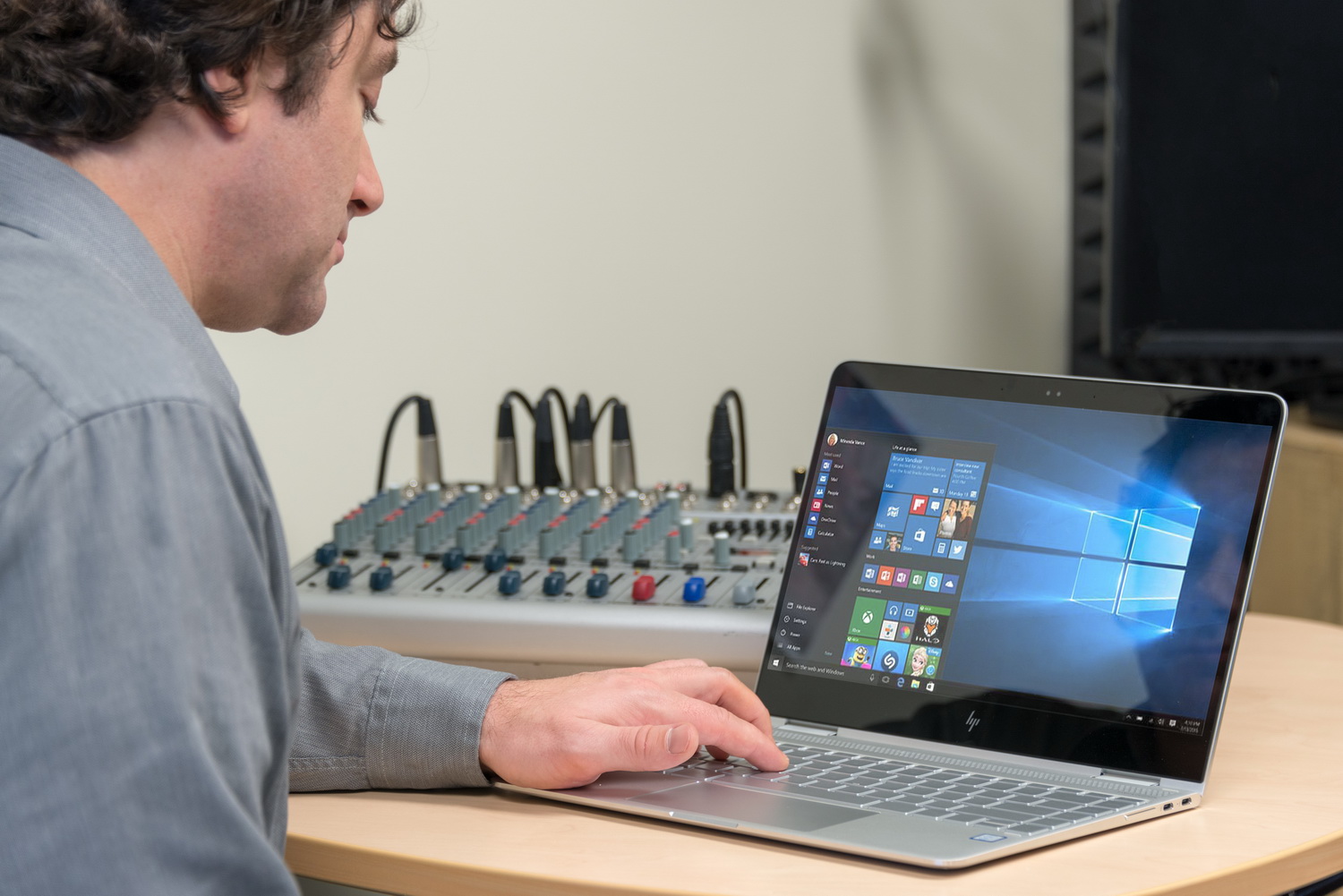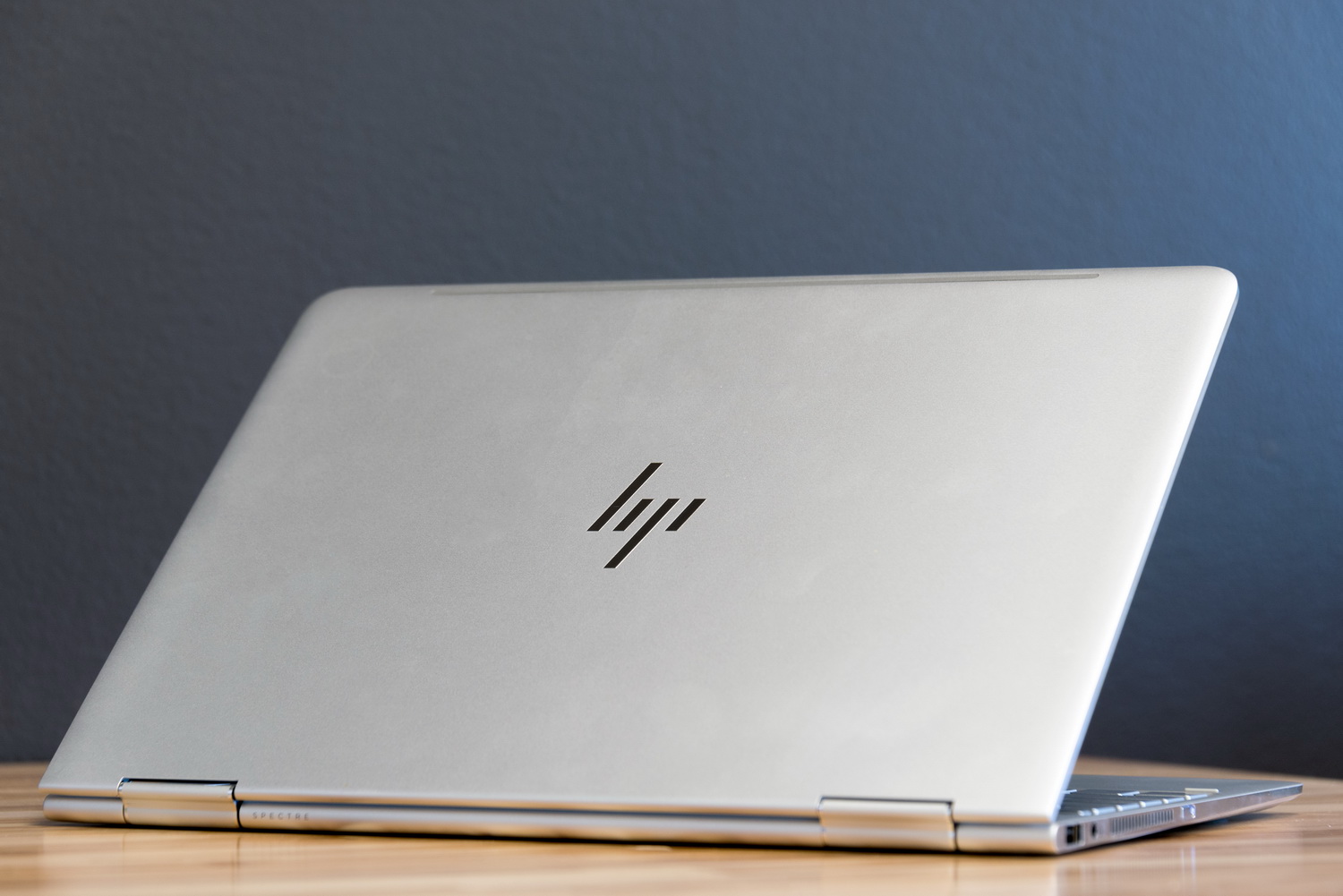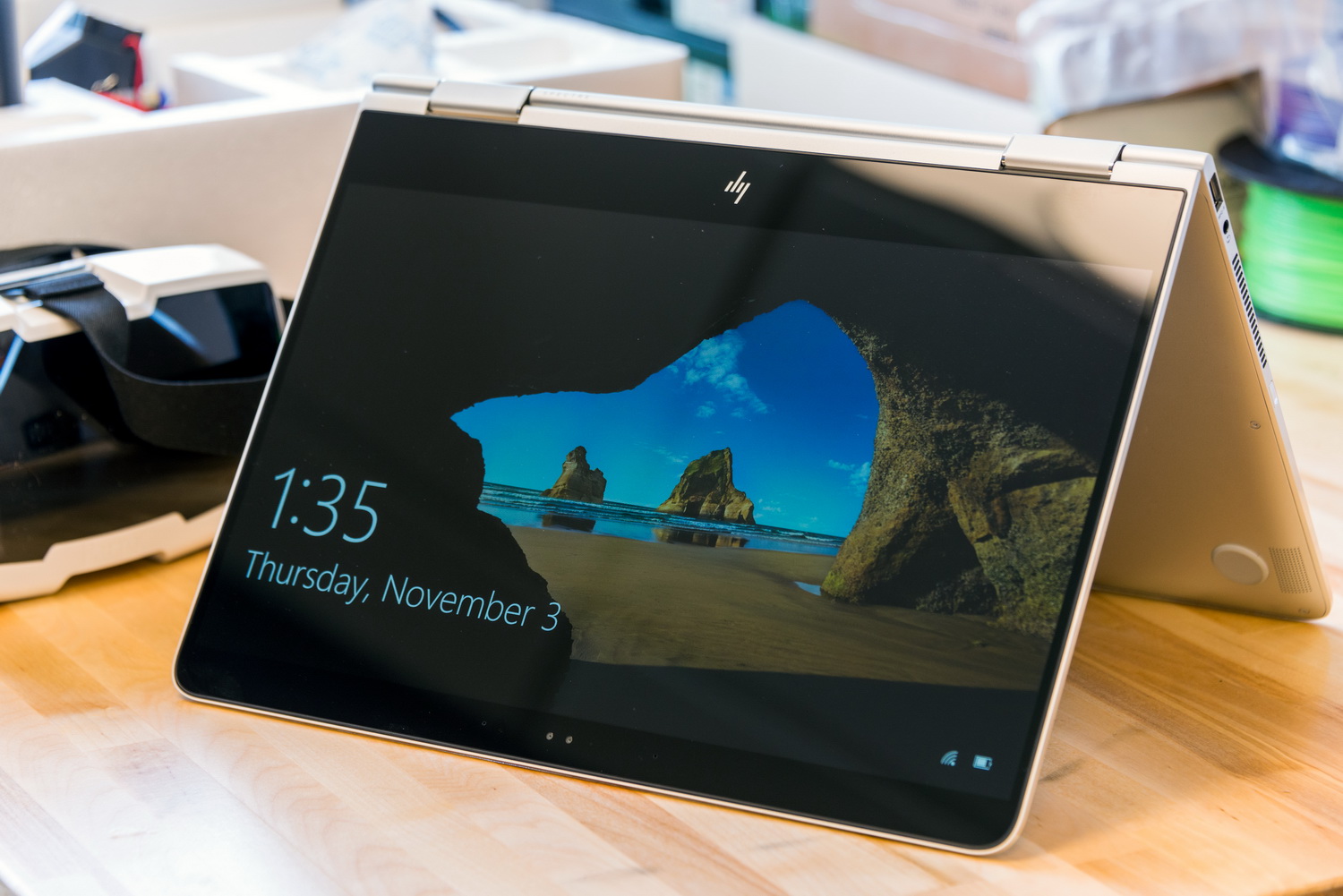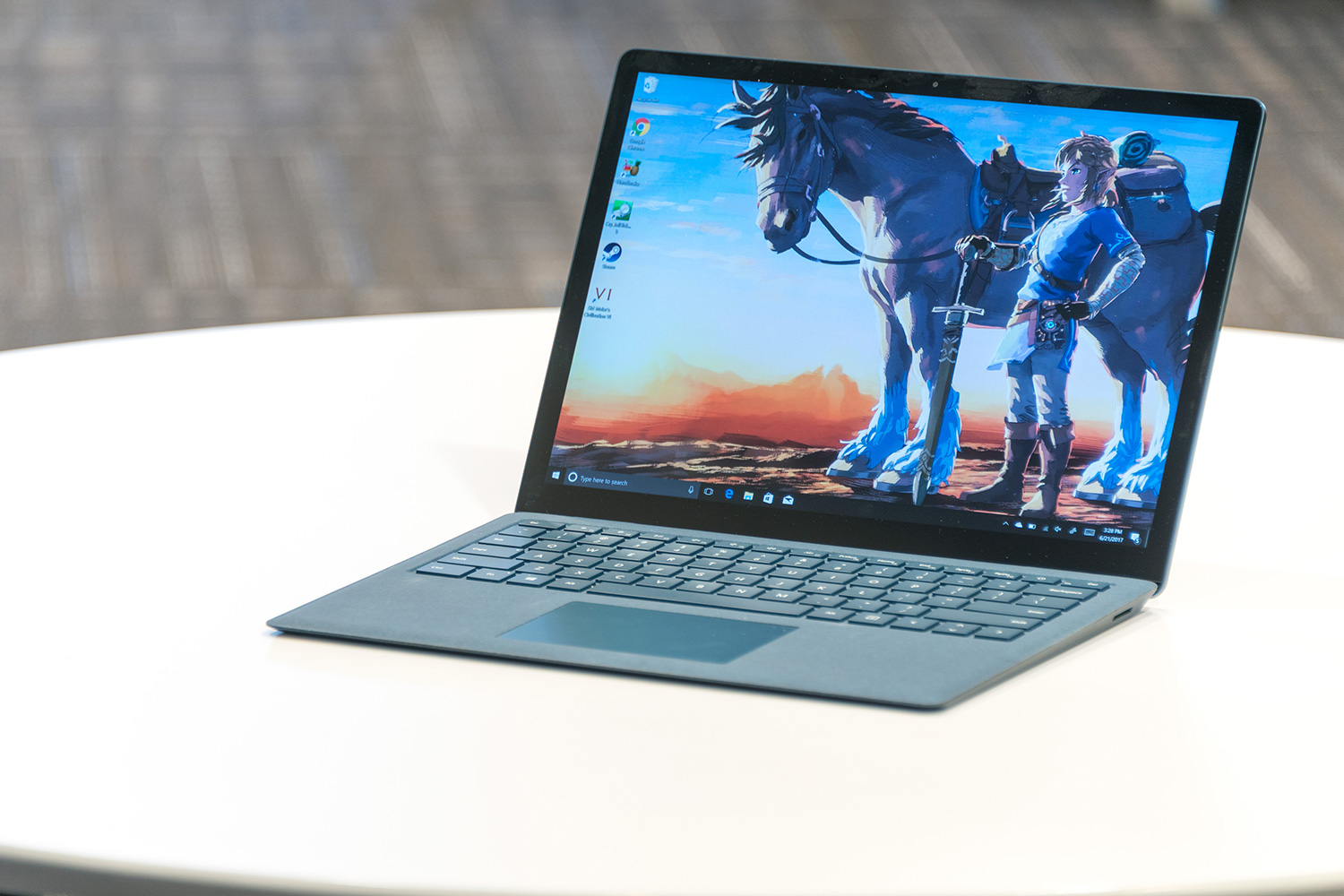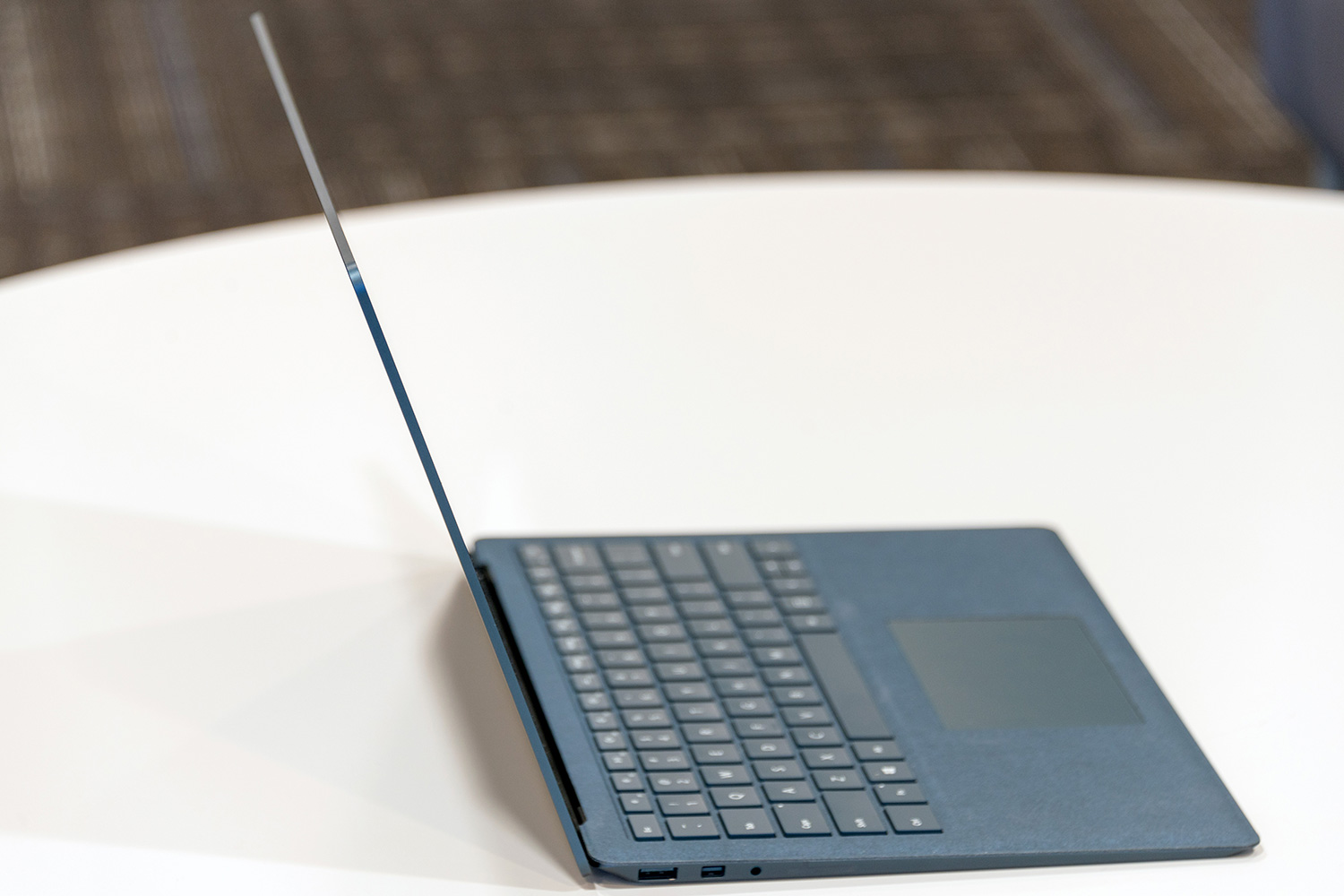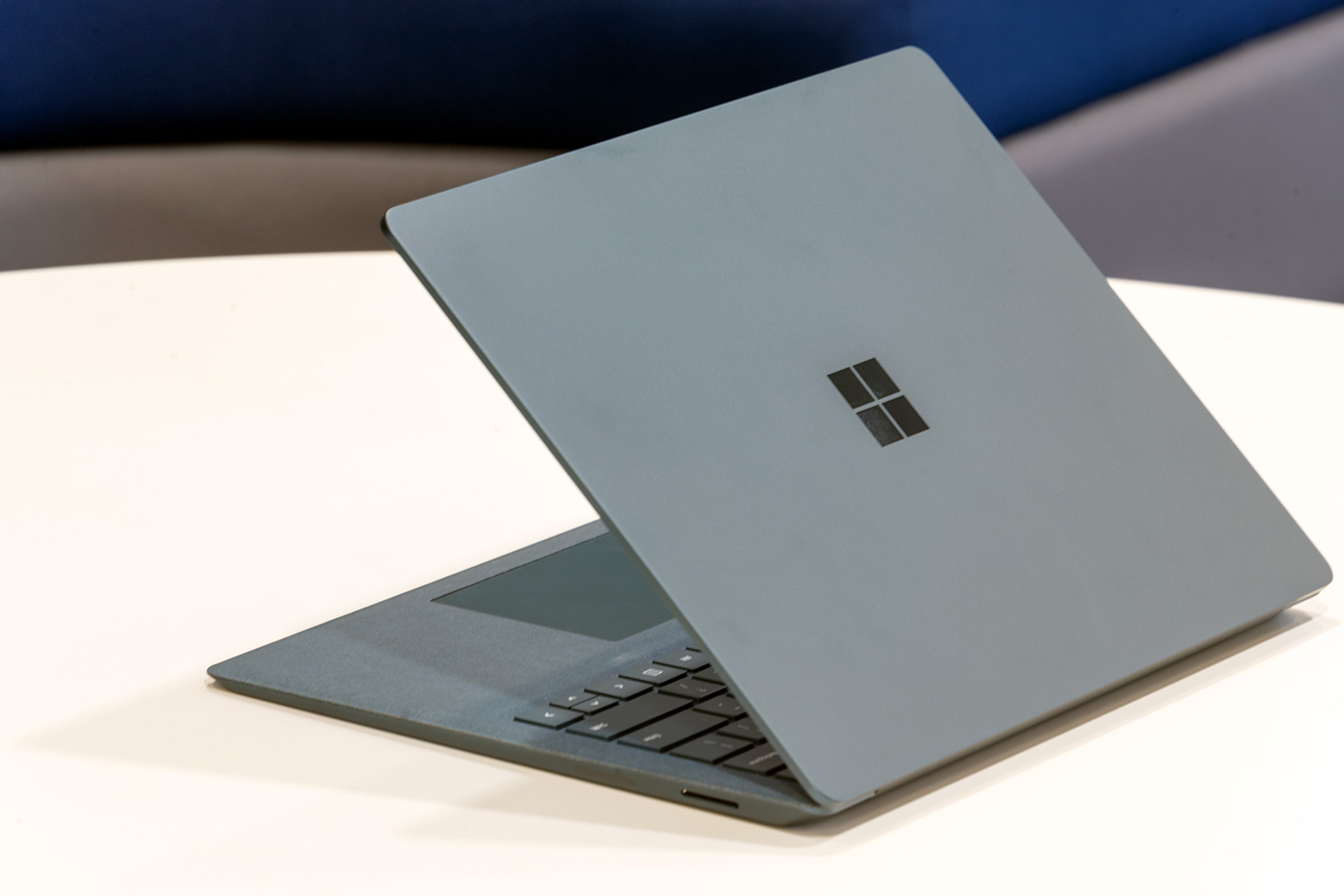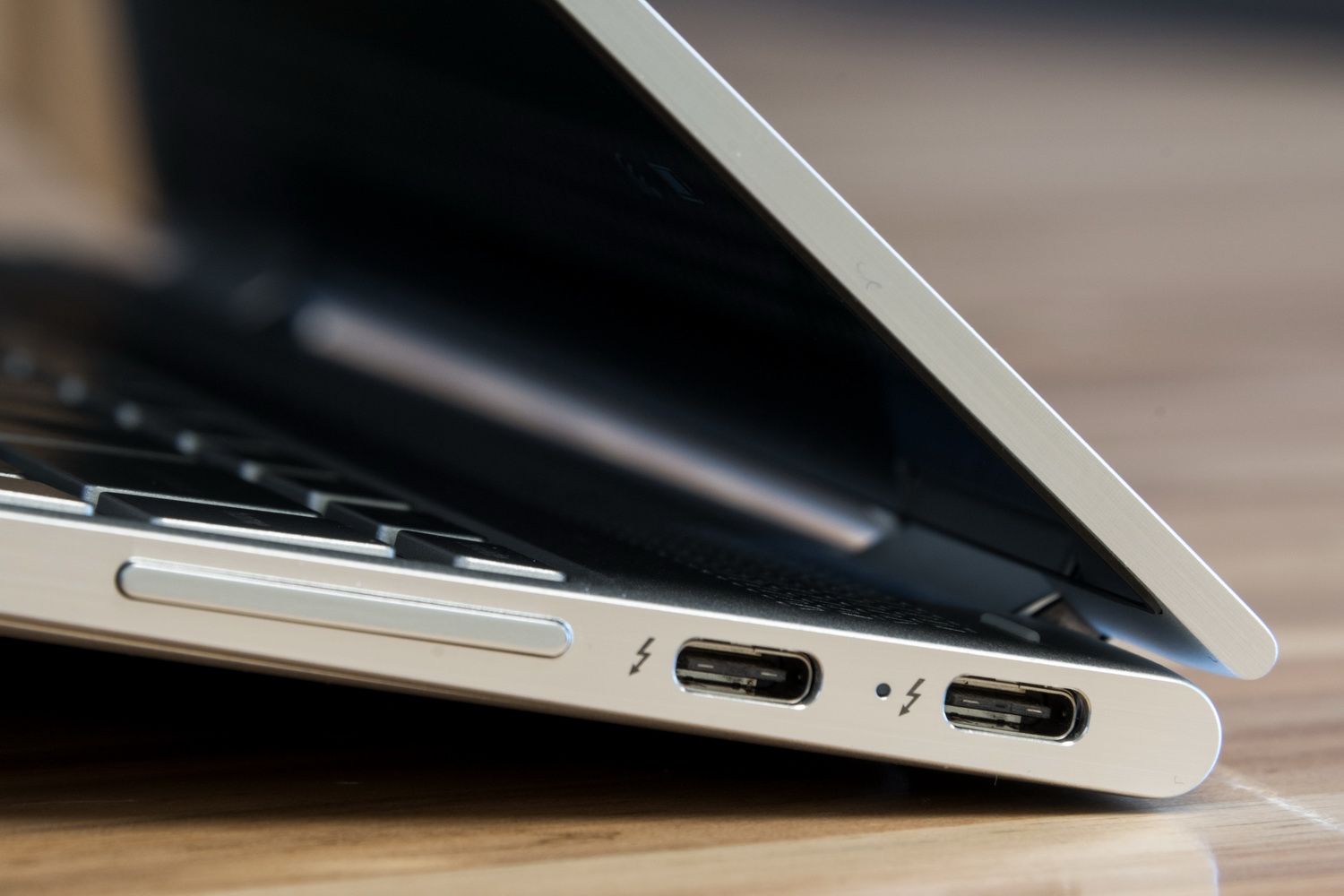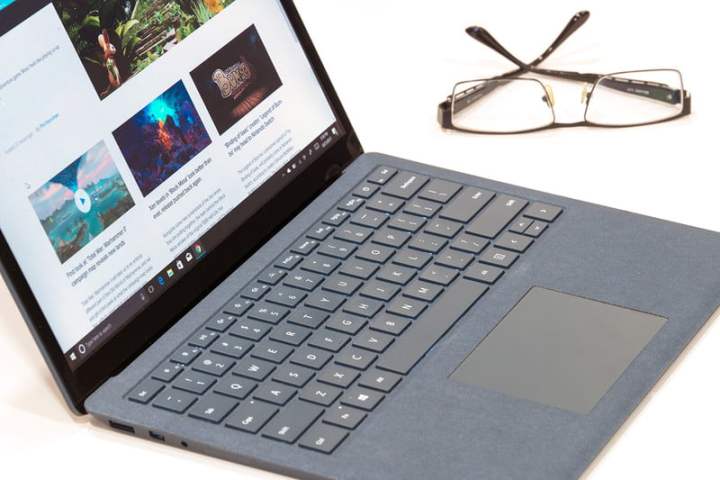
Specifications compared
|
Surface Laptop |
HP Spectre x360 13  |
|
| Dimensions | 12.13 × 8.79 × 0.57 (in) | 12.07 × 8.58 × 0.55 (in) |
| Weight | 2.76 pounds Core m3, i5; 2.83 pounds Core i7 | 2.89 pounds |
| Processor | 7th-generation Intel Core i5 or i7 | 7th-geneation Intel Core i5 or i7 |
| RAM | 4, 8, or 16GB RAM | 4, 8 or 16GB RAM |
| Display | 13.5-inch IPS PixelSense display | 13.3-inch IPS display |
| Resolution | 2,256 × 1,504 | Full HD (1,920 x 1,080) 4K UHD (3,840 x 2,160) |
| Storage | 128GB, 256GB, 512GB SSD, 1TB (coming) | 256GB, 512GB, 1TB SSD |
| Touch | 10-point touch display | 10-point touch display optional |
| Ports | USB Type-A 3.0, mini-DisplayPort, SurfaceConnect, 3.5mm headset | 1x USB 3.0 Type-A, 2x USB 3.1 Type C with Thunderbolt 3, 3.5mm headset |
| Webcam | 720p HD with infrared camera for Windows Hello support | 720p HD with infrared camera for Windows Hello support |
| Operating System | Windows 10 S (upgradable to Windows 10 Pro) | Windows 10 Home or Pro |
| Battery | 47 watt-hours | 57.8 watt-hours |
| Price | $1,200+ | |
| Review | 3 out of 5 stars | 4 out of 5 stars |
Design
The HP Spectre x360 has long been one of our favorite 2-in-1s thanks to its no-compromise design, which minimizes display bezels to fit into a smaller chassis, while making smart choices like keeping the webcam above the display where it belongs. The Spectre X360 13 is 0.55 inches thin and weighs 2.89 pounds, and it sports an all-metal design with a hinge that works fluidly throughout its 360-degree range, but still manages to remain firmly in place notebook mode. HP has two color schemes available, Natural Silver and Ash Silver with copper accents, that can accommodate both conservative and more flamboyant tastes.
Microsoft’s Surface Laptop is also a well-built notebook that exudes a premium feel, with an all-metal chassis that’s thin at .57 inches, light at 2.83 pounds, and quite sturdy throughout. But it’s not boring — Microsoft incorporated its favorite Alcantara fabric on the keyboard deck to add both a splash of color and a pleasant, rather soothing surface for the wrists to rest on while typing. You can choose from four colors, Platinum, Graphite Gold, Burgundy, and Cobalt Blue.
The HP’s ability to swing the display around and choose from notebook, tent, multimedia, and tablet modes adds some real flexibility, and ironically Microsoft — which created the modern 2-in-1 phase — loses points here with its clamshell notebook. You can’t go wrong with either machine, but the Spectre X360 wins out because you can do more with it.
Winner: HP Spectre x360
Performance
Both HP and Microsoft offer seventh-generation Intel Core i5 and i7 processors, up to 16GB of RAM, and up to 1TB solid-state drives (SSDs).
There are some differences, however, that are worth noting. First, Microsoft’s processor options top out at the Core i7-7660U with Intel Iris Plus 640 graphics, whereas the Spectre x360 goes up to the Core i7-7500U, meaning that the Surface Laptop will provide just a little extra oomph in both high-end productivity tasks and casual gaming.
Second, the Spectre x360 utilizes fast PCIe SSDs, whereas Microsoft opted for slightly slower PCIe drives, and so the HP will do better with more demanding tasks related to accessing and saving files.
In the end, we think that a faster CPU and GPU matter more than slightly slower — but still fast compared to a spinning hard disk drive — storage.
Winner: Microsoft Surface Laptop
Keyboard, mouse, and pen
As a 360-degree convertible, the HP Spectre x360 is naturally jam-packed with input options. There’s the obligatory touch display, which we found responsive, and an active pen that provides solid Windows 10 Ink support.
In addition, the keyboard is very good, with more than sufficient travel and a snappy response that makes for comfortable long-term typing sessions. We were even more impressed with the ultra-wide touchpad, which provided for sensitive multi-touch gestures. Finally, Windows Hello password-less login is provided by an infrared camera and facial recognition.
Although it’s a traditional notebook, the Surface Laptop is equally well-equipped when it comes to input options. There’s a touch screen that supports the excellent Surface Pen, although it’s hard to use with the Laptop. The keyboard has excellent travel and a precise feel, making it an equally good option for typing copious amounts of information, and the large touchpad is great with the always-reliable Microsoft Precision gesture support. Windows Hello is also provided by a reliable infrared facial scanner.

In short, both the Spectre x360 and Surface Laptop offer different ways to get information into your PC efficiently and comfortably. The Spectre x360 again gets the nod, though, for being a 360-degree convertible. Even if it’s not the thinnest or lightest tablet when the display is folded around, it’s still a far more pleasant experience than using a pen on a clamshell notebook display.
Winner: HP Spectre x360
Connectivity
HP made an effort to ensure that you can not only connect to your legacy peripherals, but also plug into tomorrow’s external devices, as well. The Spectre x360 sports two of the newer and increasingly ubiquitous USB Type-C connections, both of which support Thunderbolt 3 for things like connecting to external GPUs. There’s also a USB Type-A port, and a headset jack.
Unfortunately, HP left out an SD card reader, so that’s one dongle that’ll be needed if you want to easily transfer images and video from a camera, for example.
The Surface Laptop, on the other hand, suffers from Microsoft’s reluctance to embrace the USB Type-C movement. Like other mobile Surface machines, this one is equipped with a single USB Type-A port, a mini-DisplayPort, a headset jack, and a SurfaceConnect port, the latter of which is used to power the machine. The Surface Laptop also doesn’t come equipped with an SD card reader.

Clearly, more ports are better, and the Spectre x360 wins this round handily.
Winner: HP Spectre x360
Display quality
HP has provided a difficult choice for Spectre x360 buyers — go with a sharp 13.3-inch Full HD (1,920 x 1,080) display and save some money and battery life, or step up to an even sharper 4K UHD (3,840 x 2,160) display for the best possible Netflix experience. If you go with the latter, then you’ll enjoy a pin-sharp 331 PPI screen that makes for some excellent text and images. In our testing, the Spectre x360’s Full HD display was very good if not exceptional, and we expect the 4K option is at least as good.
The Microsoft Surface Laptop, like all Surface machines, has a simply superior display. It’s a little larger at 13.5 inches, with 2,256 x 1,504 (201 PPI) resolution, and it uses the 3:2 aspect ratio, which is taller. As a result, the Laptop shows more of your documents at once, but suffers letter-boxing when watching most video. Colors, contrast, and brightness are awesome, and in short, if you’re looking for the best notebook display, then it comes down to the Surface Laptop or a MacBook Pro.
Winner: Microsoft Surface Laptop
Portability and battery life
As we discussed earlier, the HP Spectre x360 is 0.55 inches thin and weighs 2.89 pounds, making it easy to toss into a backpack and carry around with you. The Microsoft Surface Laptop is equally thin and light at .57 inches and 2.83 pounds. Replace the Spectre x360 with the Surface Laptop, and you’re unlikely to tell the difference.
Battery life is a different story, where the Spectre x360 packs in a larger 57.8 watt-hour battery, compared to the Surface Laptop’s 47 watt-hour capacity. In our testing, the Spectre x360 with a Core i7-7500U and Full HD display managed just under five hours in our most aggressive Peacekeeper battery test, and it looped our test video for a strong ten hours and 43 minutes. The Surface Laptop running a Core i5-7200U lasted for six and a half hours in our Peacekeeper test, and played video for over twelve and a half hours.
The Spectre x360’s battery life is very good for a powerful 2-in-1 machine, that’s for sure. But in spite of having significantly more juice on hand, it couldn’t keep up with Microsoft’s almost magical Surface Laptop, which managed to squeeze some impressive battery life out of a relatively small battery, and in spite of its higher-resolution and slightly larger display.
Winner: Microsoft Surface Laptop
Availability and price
The HP Spectre x360 13 is a premium machine both in design and in pricing. It starts out at $1,200 with a Core i5-7200U, 8GB of RAM, a 256GB SSD, and a Full HD display. It currently tops out at $1,500 for a Core i7-7500U, 16GB of RAM, a 512GB SSD, and a 4K UHD display (note that the 1TB version isn’t currently available). That’s neither the most nor the least expensive machine in the premium 2-in-1 segment. Note that HP includes an active pen with the Spectre x360.
The Microsoft Surface Laptop is a Surface machine through and through, and it’s priced just like its siblings. It starts out at moderate $1,000 for a Core i5-7200U, 4GB of RAM, and 128GB SSD, and tops out at an astronomical $2,700 for a Core i7-7660U, 16GB of RAM, and a 1TB SSD. If you want to add the Surface Pen, then tack on another $100.
Clearly, while you can spend close to the same money on the low end for either machine, you get more for your money with the Spectre x360. And for the same Core i7, 16GB RAM, 512GB configuration, you’re going to spend at $2,200 for the Surface Laptop — that’s $700 more than the Spectre x360.
Winner: HP Spectre x360
Conclusion
We didn’t end up making your choice between traditional notebook and 2-in-1 any easier, maybe, but at least now you know how closely matched these two premium notebooks really are. Whether you select an HP Spectre x360 or a Surface Laptop, you’re going to be happy with the design, build quality, performance, and battery life.
We’re partial to 2-in-1s ourselves, and we think it’s better to have that flexibility and not need it than need it and not have it. For that reason, along with significantly more affordability, we’re giving the overall victory to the HP Spectre x360.
Winner: HP Spectre x360

